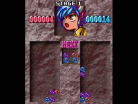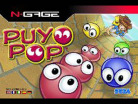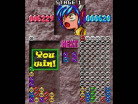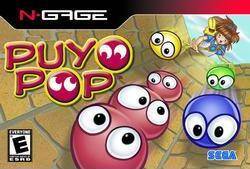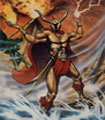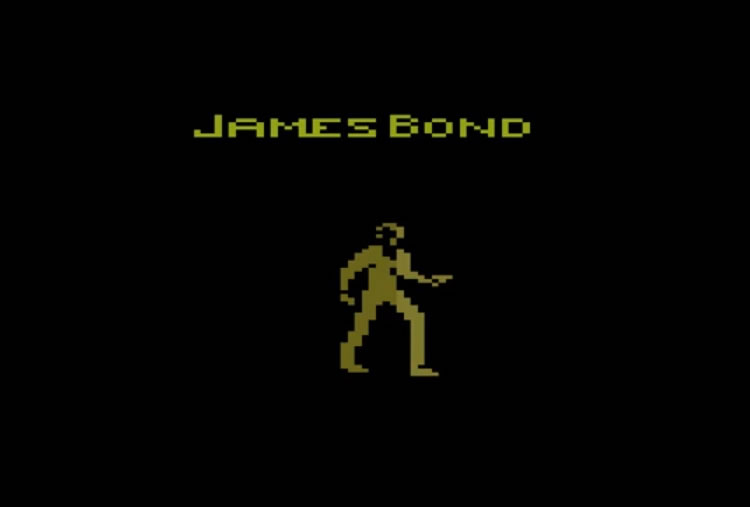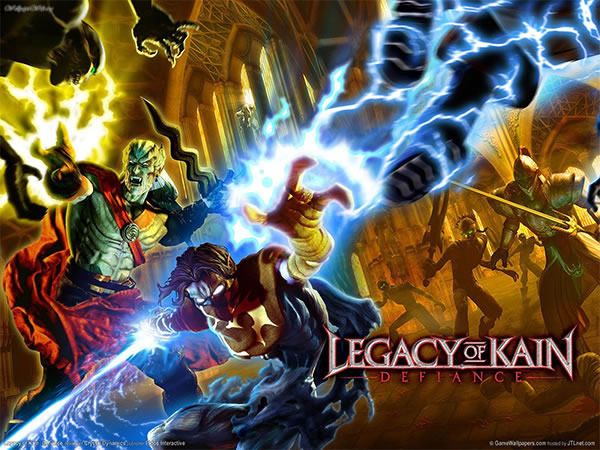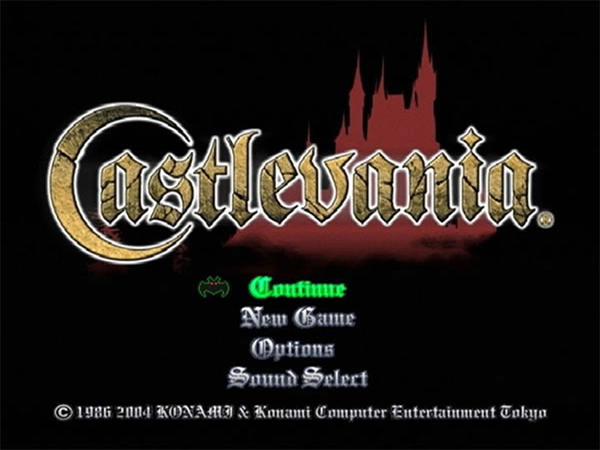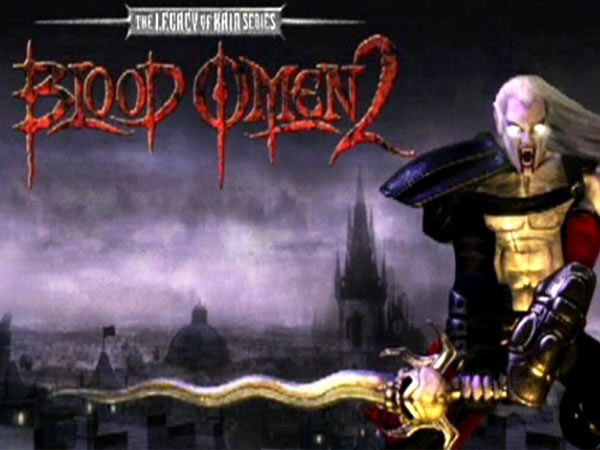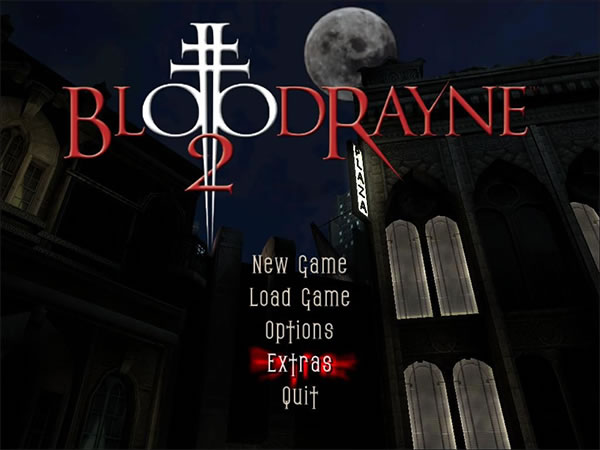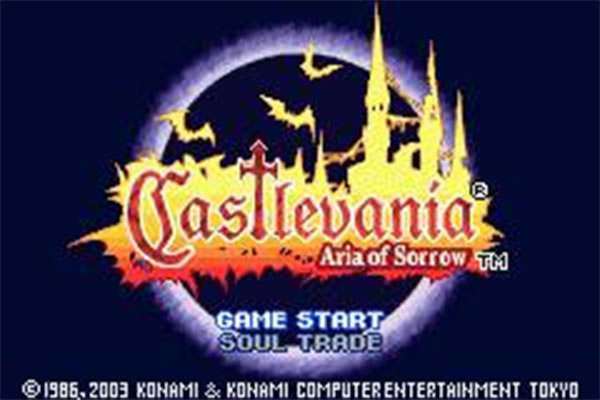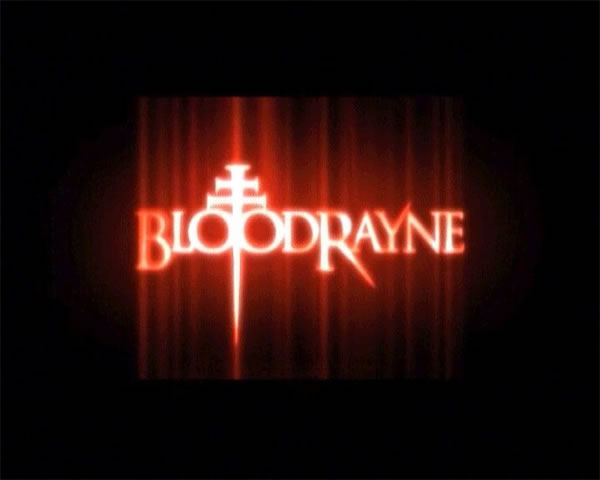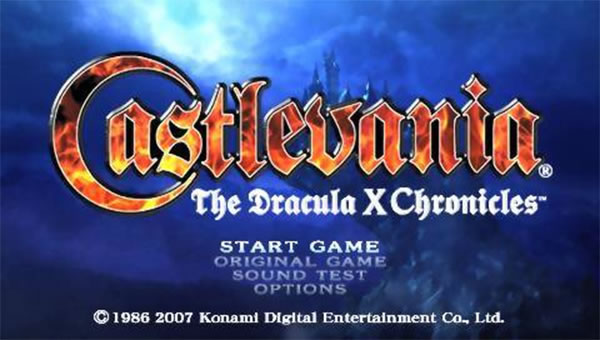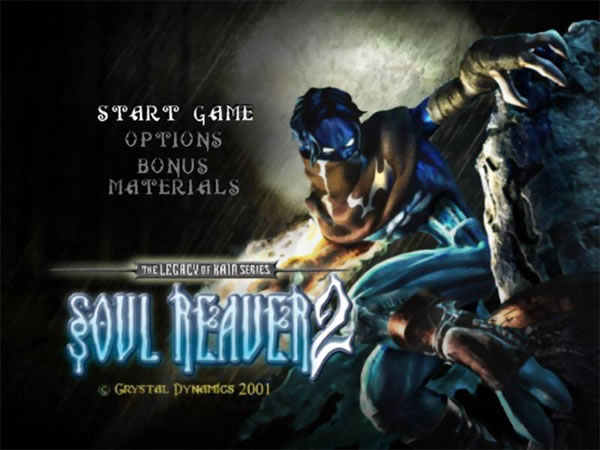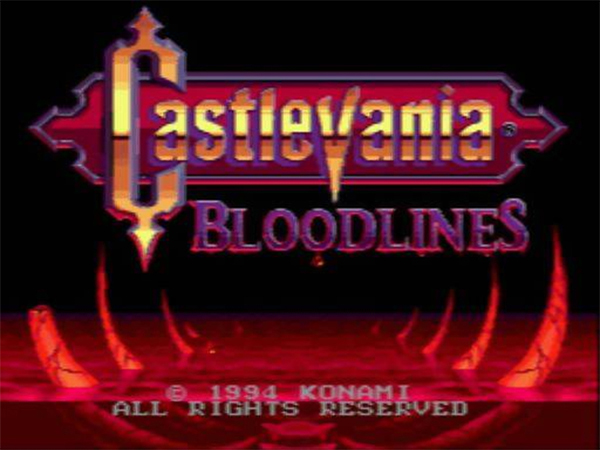- CLASSIC MAGAZINES
- REVIEW CREW
A show recapping what critics thought back
when classic games first came out! - NEXT GENERATION'S BEST & WORST
From the worst 1-star reviews to the best
5-stars can offer, this is Next Generation! - NINTENDO POWER (ARCHIVE)
Experience a variety of shows looking at the
often baffling history of Nintendo Power! - MAGAZINE RETROSPECTIVE
We're looking at the absolutely true history of
some of the most iconic game magazines ever! - SUPER PLAY'S TOP 600
The longest and most ambitious Super NES
countdown on the internet! - THEY SAID WHAT?
Debunking predictions and gossip found
in classic video game magazines! - NEXT GENERATION UNCOVERED
Cyril is back in this spin-off series, featuring the
cover critic review the art of Next Generation! - HARDCORE GAMER MAGAZING (PDF ISSUES)
Download all 36 issues of Hardcore Gamer
Magazine and relive the fun in PDF form!
- REVIEW CREW
- ELECTRONIC GAMING MONTHLY
- ELECTRONIC GAMING MONTHLY RANKS
From Mario to Sonic to Street Fighter, EGM
ranks classic game franchises and consoles! - ELECTRONIC GAMING MONTHLY BEST & WORST
Counting down EGM’s best and worst reviews
going year by year, from 1989 – 2009! - ELECTRONIC GAMING BEST & WORST AWARDS
11-part video series chronicling the ups and
downs of EGM’s Best & Worst Awards!
- ELECTRONIC GAMING MONTHLY RANKS
- GAME HISTORY
- GAME OVER: STORY BREAKDOWNS
Long-running series breaking down game
stories and analyzing their endings! - A BRIEF HISTORY OF GAMING w/ [NAME HERE]
Real history presented in a fun and pithy
format from a variety of game historians! - THE BLACK SHEEP
A series looking back at the black sheep
entries in popular game franchises! - INSTANT EXPERT
Everything you could possibly want to know
about a wide variety of gaming topics! - FREEZE FRAME
When something familiar happens in the games
industry, we're there to take a picture! - I'VE GOT YOUR NUMBER
Learn real video game history through a series
of number-themed episodes, starting at zero! - GREAT MOMENTS IN BAD ACTING
A joyous celebration of some of gaming's
absolute worst voice acting!
- GAME OVER: STORY BREAKDOWNS
- POPULAR SHOWS
- DG NEWS w/ LORNE RISELEY
Newsman Lorne Riseley hosts a regular
series looking at the hottest gaming news! - REVIEW REWIND
Cyril replays a game he reviewed 10+ years
ago to see if he got it right or wrong! - ON-RUNNING FEUDS
Defunct Games' longest-running show, with
editorials, observations and other fun oddities! - DEFUNCT GAMES QUIZ (ARCHIVE)
From online quizzes to game shows, we're
putting your video game knowledge to the test!- QUIZ: ONLINE PASS
Take a weekly quiz to see how well you know
the news and current gaming events! - QUIZ: KNOW THE GAME
One-on-one quiz show where contestants
find out if they actually know classic games! - QUIZ: THE LEADERBOARD
Can you guess the game based on the classic
review? Find out with The Leaderboard!
- QUIZ: ONLINE PASS
- DEFUNCT GAMES VS.
Cyril and the Defunct Games staff isn't afraid
to choose their favorite games and more! - CYRIL READS WORLDS OF POWER
Defunct Games recreates classic game
novelizations through the audio book format!
- DG NEWS w/ LORNE RISELEY
- COMEDY
- GAME EXPECTANCY
How long will your favorite hero live? We crunch
the numbers in this series about dying! - VIDEO GAME ADVICE
Famous game characters answer real personal
advice questions with a humorous slant! - FAKE GAMES: GUERILLA SCRAPBOOK
A long-running series about fake games and
the people who love them (covers included)! - WORST GAME EVER
A contest that attempts to create the worst
video game ever made, complete with covers! - LEVEL 1 STORIES
Literature based on the first stages of some
of your favorite classic video games! - THE COVER CRITIC
One of Defunct Games' earliest shows, Cover
Critic digs up some of the worst box art ever! - COMMERCIAL BREAK
Take a trip through some of the best and
worst video game advertisements of all time! - COMIC BOOK MODS
You've never seen comics like this before.
A curious mix of rewritten video game comics!
- GAME EXPECTANCY
- SERIES ARCHIVE
- NINTENDO SWITCH ONLINE ARCHIVE
A regularly-updated list of every Nintendo
Switch Online release, plus links to review! - PLAYSTATION PLUS CLASSIC ARCHIVE
A comprehensive list of every PlayStation
Plus classic release, including links! - RETRO-BIT PUBLISHING ARCHIVE
A regularly-updated list of every Retro-Bit
game released! - REVIEW MARATHONS w/ ADAM WALLACE
Join critic Adam Wallace as he takes us on a
classic review marathon with different themes!- DEFUNCT GAMES GOLF CLUB
Adam Wallace takes to the links to slice his way
through 72 classic golf game reviews! - 007 IN PIXELS
Adam Wallace takes on the world's greatest spy
as he reviews 15 weeks of James Bond games! - A SALUTE TO VAMPIRES
Adam Wallace is sinking his teeth into a series
covering Castlevania, BloodRayne and more! - CAPCOM'S CURSE
Adam Wallace is celebrating 13 days of Halloween
with a line-up of Capcom's scariest games! - THE FALL OF SUPERMAN
Adam Wallace is a man of steel for playing
some of the absolute worst Superman games! - THE 31 GAMES OF HALLOWEEN
Adam Wallace spends every day of October afraid
as he reviews some of the scariest games ever! - 12 WEEKS OF STAR TREK
Adam Wallace boldly goes where no critic has
gone before in this Star Trek marathon!
- DEFUNCT GAMES GOLF CLUB
- DAYS OF CHRISTMAS (ARCHIVE)
Annual holiday series with themed-episodes
that date all the way back to 2001!- 2015: 30 Ridiculous Retro Rumors
- 2014: 29 Magazines of Christmas
- 2013: 29 Questionable Power-Ups of Christmas
- 2012: 34 Theme Songs of Christmas
- 2011: 32 Game Endings of Christmas
- 2010: 31 Bonus Levels of Christmas
- 2009: 30 Genres of Christmas
- 2008: 29 Controls of Christmas
- 2007: 34 Cliches of Christmas
- 2006: 33 Consoles of Christmas
- 2005: 32 Articles of Christmas
- 2004: 31 Websites of Christmas
- 2003: 29 Issues of Christmas
- 2002: 28 Years of Christmas
- 2001: 33 Days of Christmas
- NINTENDO SWITCH ONLINE ARCHIVE
- REVIEW ARCHIVE
- FULL ARCHIVE
Puyo Pop
Here's a question for you: What do the Game Boy Advance, GameCube, PlayStation 1/2, Xbox, Xbox 360, Dreamcast, Game Gear, Genesis, Super NES, NeoGeo Pocket Color, N64, Saturn -- and no doubt a slew of other consoles and arcade platforms -- have in common with the Nokia N-Gage? Puyo Pop, of course. The popular (no pun intended, I swear) Japanese puzzle series has spanned almost as many platforms as genre grandpa Tetris, so it's no surprise that the N-Gage has its own version as well.
Better known in the west for its localized versions (Dr. Robotnik's Mean Bean Machine and Kirby's Avalanche), the Puyo Puyo/Pop franchise is rooted in the ideal that the simplest puzzle games are the best. If you've never played it, here's how it works: pairs of beans in five different colors fall into a Tetris-style well. The objective is to connect four or more same-colored beans to make them pop. For higher points, players can set up chain reactions by carefully planning bean placement ahead of time. Junk blocks ("refugees") that can only be cleared by popping an adjacent group of colored beans complicate matters, but that's pretty much the basics of how Puyo Pop plays.
The N-Gage version features three different single-player modes. "Scenario" adds the usual ridiculous storyline to the puzzle popping gameplay and has you compete against 12 different AI opponents, "Exercise" is basically an endless mode that lets you choose from three difficulty settings (Level 1, 5, or 9) and just play for fun, and "Puzzle" has you try and accomplish specific objectives (such as clearing all blocks of one color or clearing the entire screen).
While the amount of modes or options is in line with previous versions of the game, the actual gameplay isn't. The N-Gage seems to have no problem handling 3D games like Tomb Raider or Tony Hawk, but when it comes to duplicating decade old 2D gameplay, it chokes? Come on! The hardware should be able to handle games like Puyo Pop with ease, but for some reason Puyo Pop feels sluggish and unresponsive, especially when played on the higher levels. Maybe it's just that the game was poorly done. Good puzzle games start out slow, but turn into frantic mayhem in the hands of an expert player -- sadly, slow bubble popping animations and unresponsive movement keep Puyo Pop for N-Gage from accomplishing that lofty goal. But an even bigger problem is the developer's choice to ignore the idiosyncrasies of the N-Gage display and to try and duplicate the standard bean colors of red, green, yellow, blue and purple. While the first three are no problem, it's difficult to tell blue and purple apart on the system's screen. It's possible, mind you, as the puyos all have slightly different shapes, but squinting at the screen trying to tell the colors apart wasn't a challenge the originators of the series intended. It's puzzling, too, as the score display at the top of the screen proves that it's not that hard to create a solid object in a lighter shade of blue.
On the multiplayer front, Puyo Pop for N-Gage enables two players (each with his or her own copy of the game) to go head to head via wireless Bluetooth technology. There aren't any mode variations or handicap settings, just the standard two-player versus mode (do combos and you'll send junk blocks to the other player), but the link-up works flawlessly.
The N-Gage version looks similar to Puyo Pop on GBA. The graphics remain simple and the screen setup works perfectly with the tall format of the N-Gage screen. Simple cut-scenes with anime-style characters tell the story, but it's all basic stuff with little to no animation.
The quality of the audio is actually not bad, but the tunes are so short that they loop within a matter of seconds. That means the melodies will get old very quickly. Luckily, there is an off-setting for the sound, which can be accessed from the options menu. Like with many of the previous Puyo ports, sound effects are confined to blips and bleeps and sound as dated as always.
In the end Puyo Pop is an unambitious port of a good puzzle game. It's a testimony to the game's tried-and-true formula that despite the speed and color flaws, it still remains playable and enjoyable to a certain extent. The two-player Bluetooth mode is great fun, but there is simply nothing here that hasn't been seen before. As a matter of fact, the N-Gage version is weaker than all the previous handheld Puyo Pop's I've played. While GBA owners got four-player battles (using only one cart) and 15 AI opponents, N-Gage players can play two-player or compete against 12 opponents. I hope the N-Gage has more to offer Puzzle fans than this.
Better known in the west for its localized versions (Dr. Robotnik's Mean Bean Machine and Kirby's Avalanche), the Puyo Puyo/Pop franchise is rooted in the ideal that the simplest puzzle games are the best. If you've never played it, here's how it works: pairs of beans in five different colors fall into a Tetris-style well. The objective is to connect four or more same-colored beans to make them pop. For higher points, players can set up chain reactions by carefully planning bean placement ahead of time. Junk blocks ("refugees") that can only be cleared by popping an adjacent group of colored beans complicate matters, but that's pretty much the basics of how Puyo Pop plays.
The N-Gage version features three different single-player modes. "Scenario" adds the usual ridiculous storyline to the puzzle popping gameplay and has you compete against 12 different AI opponents, "Exercise" is basically an endless mode that lets you choose from three difficulty settings (Level 1, 5, or 9) and just play for fun, and "Puzzle" has you try and accomplish specific objectives (such as clearing all blocks of one color or clearing the entire screen).
While the amount of modes or options is in line with previous versions of the game, the actual gameplay isn't. The N-Gage seems to have no problem handling 3D games like Tomb Raider or Tony Hawk, but when it comes to duplicating decade old 2D gameplay, it chokes? Come on! The hardware should be able to handle games like Puyo Pop with ease, but for some reason Puyo Pop feels sluggish and unresponsive, especially when played on the higher levels. Maybe it's just that the game was poorly done. Good puzzle games start out slow, but turn into frantic mayhem in the hands of an expert player -- sadly, slow bubble popping animations and unresponsive movement keep Puyo Pop for N-Gage from accomplishing that lofty goal. But an even bigger problem is the developer's choice to ignore the idiosyncrasies of the N-Gage display and to try and duplicate the standard bean colors of red, green, yellow, blue and purple. While the first three are no problem, it's difficult to tell blue and purple apart on the system's screen. It's possible, mind you, as the puyos all have slightly different shapes, but squinting at the screen trying to tell the colors apart wasn't a challenge the originators of the series intended. It's puzzling, too, as the score display at the top of the screen proves that it's not that hard to create a solid object in a lighter shade of blue.
On the multiplayer front, Puyo Pop for N-Gage enables two players (each with his or her own copy of the game) to go head to head via wireless Bluetooth technology. There aren't any mode variations or handicap settings, just the standard two-player versus mode (do combos and you'll send junk blocks to the other player), but the link-up works flawlessly.
The N-Gage version looks similar to Puyo Pop on GBA. The graphics remain simple and the screen setup works perfectly with the tall format of the N-Gage screen. Simple cut-scenes with anime-style characters tell the story, but it's all basic stuff with little to no animation.
The quality of the audio is actually not bad, but the tunes are so short that they loop within a matter of seconds. That means the melodies will get old very quickly. Luckily, there is an off-setting for the sound, which can be accessed from the options menu. Like with many of the previous Puyo ports, sound effects are confined to blips and bleeps and sound as dated as always.
In the end Puyo Pop is an unambitious port of a good puzzle game. It's a testimony to the game's tried-and-true formula that despite the speed and color flaws, it still remains playable and enjoyable to a certain extent. The two-player Bluetooth mode is great fun, but there is simply nothing here that hasn't been seen before. As a matter of fact, the N-Gage version is weaker than all the previous handheld Puyo Pop's I've played. While GBA owners got four-player battles (using only one cart) and 15 AI opponents, N-Gage players can play two-player or compete against 12 opponents. I hope the N-Gage has more to offer Puzzle fans than this.
HOME |
CONTACT |
NOW HIRING |
WHAT IS DEFUNCT GAMES? |
NINTENDO SWITCH ONLINE |
RETRO-BIT PUBLISHING
Retro-Bit |
Switch Planet |
The Halcyon Show |
Same Name, Different Game |
Dragnix |
Press the Buttons
Game Zone Online | Hardcore Gamer | The Dreamcast Junkyard | Video Game Blogger
Dr Strife | Games For Lunch | Mondo Cool Cast | Boxed Pixels | Sega CD Universe | Gaming Trend
Game Zone Online | Hardcore Gamer | The Dreamcast Junkyard | Video Game Blogger
Dr Strife | Games For Lunch | Mondo Cool Cast | Boxed Pixels | Sega CD Universe | Gaming Trend
Copyright © 2001-2025 Defunct Games
All rights reserved. All trademarks are properties of their respective owners.
All rights reserved. All trademarks are properties of their respective owners.






